*Editorial and photos by Rayane Gabriel da Silva
Nematicides and their effects on the reciprocal density of phytonematodes
Nematodes are found in all agricultural areas in Brazil, and the most important species in terms of losses to growers are: M. javanica, and M. incognita (figure 1), Heterodera glycines (figure 2), Pratylenchus brachyurus (figure 3) and Rotylenchulus reniformis (figure 4).
The species above are strongly favored by the production system in which they are found. The succession Soybean/Off-Season Corn or Off-Season Cotton, for example, ensures the multiplication of nematodes throughout the crop season, creating a ‘green bridge’, that is, food sources for nematodes all year round.
Figure 5 illustrates how populations of Pratylenchus brachyurus are able to survive on corn ratoons for up to 80 days after harvest. Roots were collected at 15 spots and it was observed that a large portion of the population had been multiplying, allowing nematodes to find the roots in the first days after sowing summer crops.
Considering the different strategies used in the management of nematodes, we can highlight crop rotation, resistant cultivars, chemical nematicides, and bionematicides.
The use of nematicides, either biological or chemical ones, brings good benefits to the root system, in addition to providing support so that plants can survive the damage caused by nematodes.
Chemical control has several benefits, as chemical products act directly on nematodes and prevent them from penetrating the root system of plants. On the other hand, this strategy requires awareness and caution in order to preserve the environment and soil microbiota.
Biological control is a tool that has gained importance when it comes to controlling nematodes. This remarkable increase is related to the adoption of more sustainable farming practices, in addition to the fact that the return on investment of these bioproducts is higher.
After being incorporated into production systems, this biological tool recomposes the soil microbiota, showing satisfactory results and cumulative effect of these microorganisms in subsequent crop seasons.
Products based on fungi and bacteria as nematode control agents comprise most of the products registered with the Ministry of Agriculture. Several biological agents with different strains have already been registered with MAPA. In 2019, 40 biological products were registered, which led to a growing demand for products that are highly efficient and do not harm the environment.
Bacillus subitilis, for example, is commonly used to control nematodes, and it contains endospores in its formulation, which increase the product’s shelf life and enhance its stability and efficiency. The use of this genus of bacteria consists of the production of a number of secondary metabolites as well as biofilms that contribute to a preventive and beneficial colonization for soybean roots.
The application method, on-seed or in-furrow application, is debatable regarding efficiency, given that some claim that the latter is more efficient than the former, which discredits seed treatment. Data from the Chapadão Foundation showed higher yields of soybean productivity when products were applied in furrow compared with seed treatment (unpublished data).
The biological control of nematodes is trending, but it is worth emphasizing the importance of using biologicals properly and following all recommendations in order not to waste its technological characteristics. It is important to pay attention to quality control, compatibility with chemical molecules, and registration for target pests and crops.
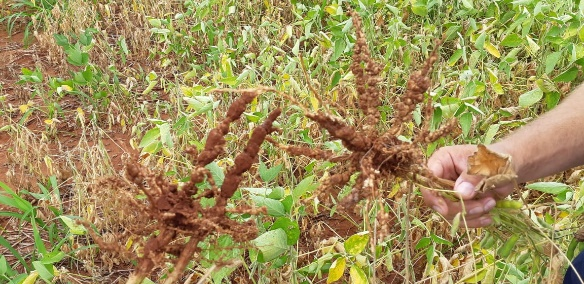
Figure 01. Symptoms on soybean roots infected by Meloidogyne incognita.
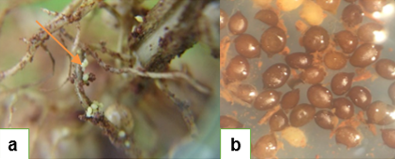
Figure 02. Females of Heterodera glycines attached to soybean roots (a)
Cysts in 100cm3 of soil in (b).
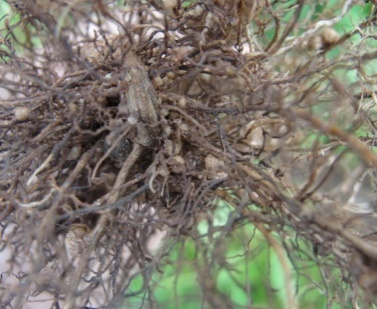
Figura 03. Lesões causadas por Pratylenchus brachyurus em raízes de soja.
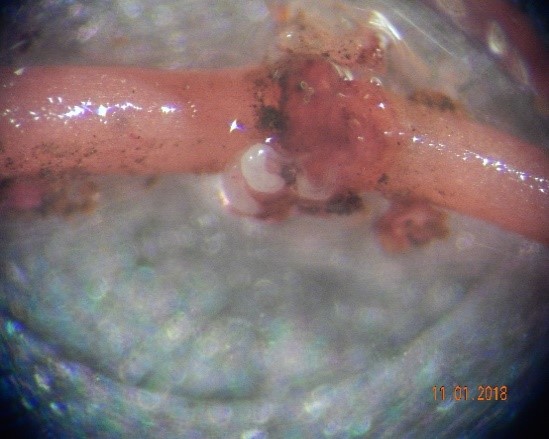
Figure 04. Fêmeas de Rotylenchulus reniformis Females of Rotylenchulus reniformis attached to cotton roots.
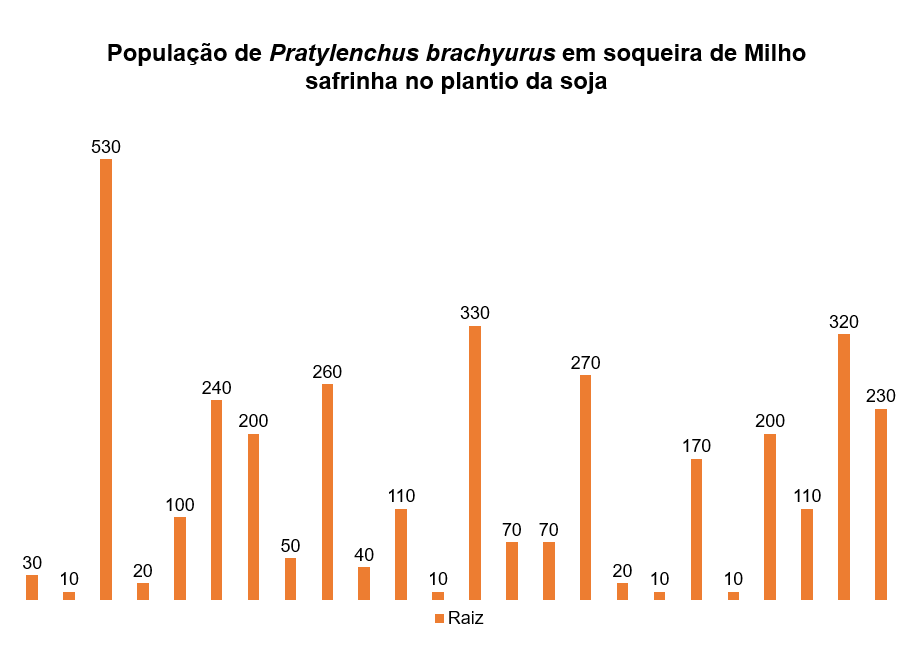
Figure 05. Population of Pratylenchus brachyurus in off-season corn ratoons and remaining populations when planting soybean
Rayane Gabriel da Silva is a researcher at Fundação Chapadão (Chapadão do Sul – MS), BIOTROP’s homologated partner for laboratory analyses of root and soil. Article written exclusively for BIOTROP.

